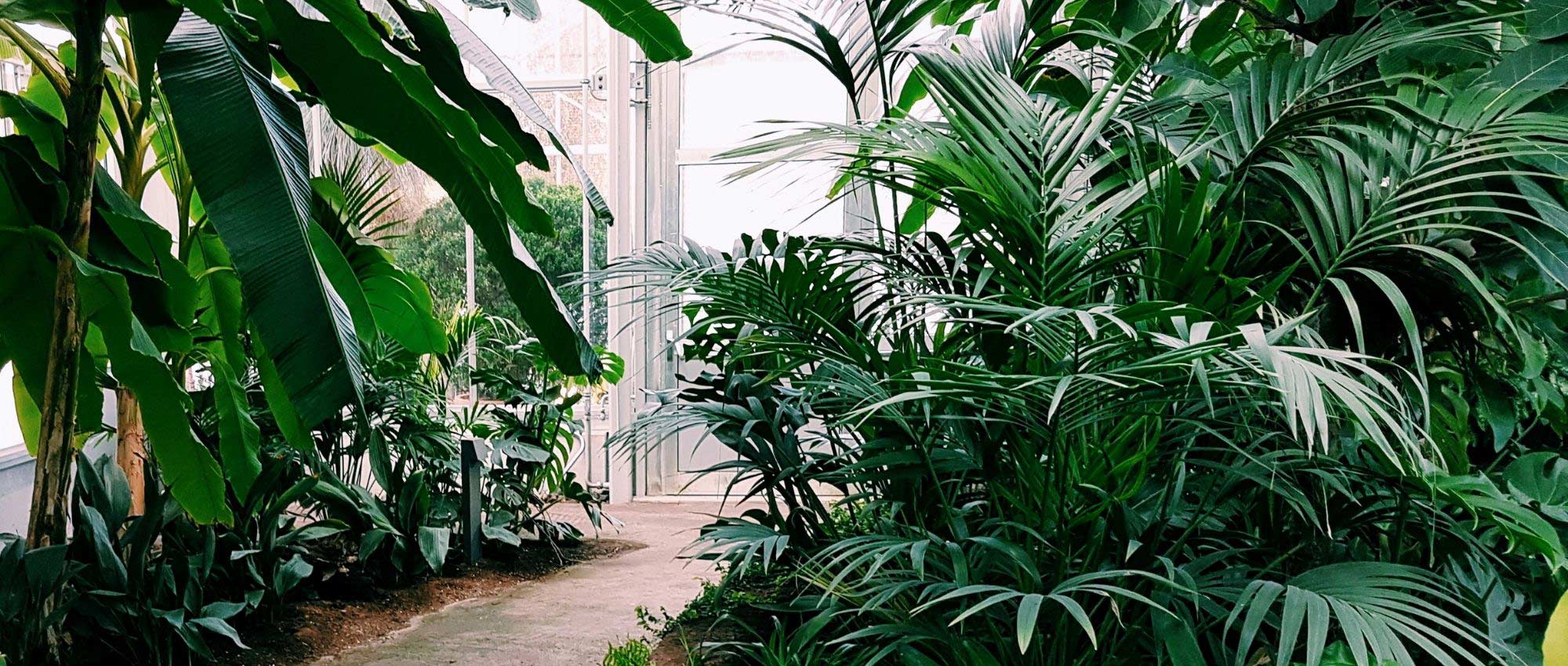
Potted palms: 7 remarkable species for indoors
to create a tropical ambience at home or in a conservatory
Contents
Whether placed in the garden or indoors, palms instantly create a very exotic setting thanks to their majestic foliage. Some are very hardy, while others are more tender and are perfect for pot culture indoors. There are varieties that tolerate warm, dry indoor air of flats and houses quite well. To plant them, use a large, fairly deep pot and remember to add a drainage layer at the bottom (clay pebbles, gravel…). Then place the palm in a very bright spot, preferably out of direct sunlight as this can scorch its foliage. Remember to water regularly from spring to autumn, then reduce watering in winter. You can also mist the foliage, as some palms appreciate humid atmospheres, and this helps prevent attacks by red spider mites. By following these few tips, you will have no difficulty growing palms indoors. To help you find the ideal variety, I invite you to discover the best indoor palms that will enable you to create a lush, tropical atmosphere at home!
Finally, to learn everything and succeed in growing palms, consult our dedicated fact sheet.
Phoenix roebelenii
Nicknamed ‘Mekong date palm’, Phoenix roebelenii is an Asian palm with beautiful pinnate leaves, reminiscent of feathers. They are particularly supple and light, gracefully arching. Its leaves are so fine they are almost see-through. They measure 1 m to 1.20 m in length and bear thorns at the base of the petiole. This palm is prized for its very elegant silhouette. Planted in a large pot, it will adapt very well to indoor cultivation or a warm greenhouse. However, it needs very bright light. In spring and summer, water copiously and regularly, and apply fertiliser, because it likes rich, fertile soils. Reduce watering in winter. It does not appreciate repotting or sudden changes in growing conditions. However, you can repot it every two to three years, handling it gently so as not to disturb the root system too much. Concerning pests, Phoenix roebelenii is sometimes attacked by red spider mites or scale insects.
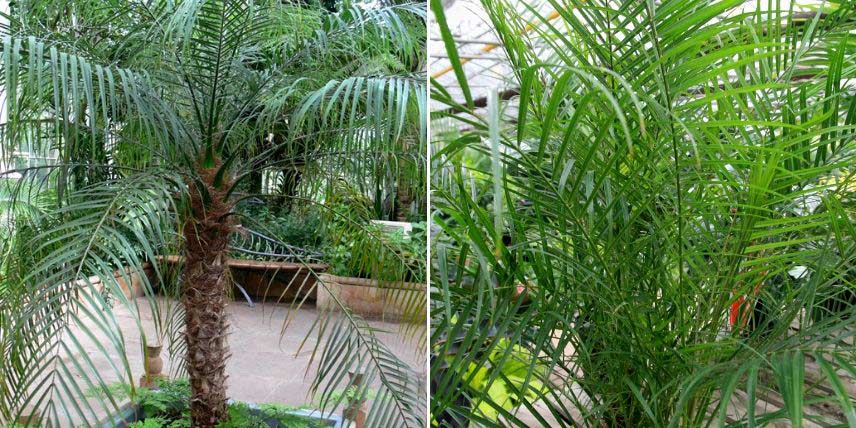
Phoenix roebelenii is a palm with very fine leaves! (photos: Prashanthns / David J. Stang)
Rhapis excelsa
Rhapis excelsa is a charming palm native to forests of southern China. It forms clumps made up of numerous thin stems arising from the ground, which makes it resemble bamboo! It is commonly called ‘bamboo palm’ or ‘Chinese palm’. It has palmate, glossy dark green foliage, with segments cut almost along entire length of the lamina. Leaves have between three and ten leaflets. It is an easy, undemanding palm. Avoid direct sun, which can scorch its leaves. On the contrary, Rhapis excelsa has the advantage of tolerating low light. It is perfect in a house, an apartment or a temperate greenhouse. During summer, you can place it outdoors, sheltered from direct sun. It appreciates atmospheric humidity, so I recommend misting its foliage occasionally with water.
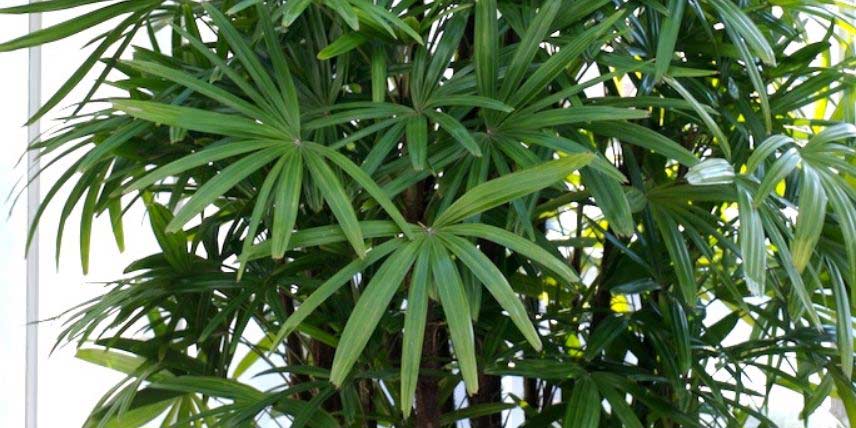
Rhapis excelsa forms clumps with palmate leaves (photo Eric in SF)
Discover other Palm trees
View all →Available in 5 sizes
Available in 1 sizes
Available in 1 sizes
Available in 1 sizes
Available in 1 sizes
Available in 4 sizes
Available in 2 sizes
Available in 1 sizes
Available in 1 sizes
Livistona chinensis
Native to China, Japan and Taiwan, Livistona chinensis is a palm that bears large fan-shaped leaves, palmate, borne on thorny petioles. The leaf tips droop towards the ground, hence its common name ‘fountain palm’. They are arranged at the top of a thick stipe, swollen at the base. It is easy to grow indoors or in a conservatory, in a bright spot but out of direct sunlight. As it naturally grows on cool or moist, fairly rich soils, it needs regular watering and will appreciate applications of fertiliser.
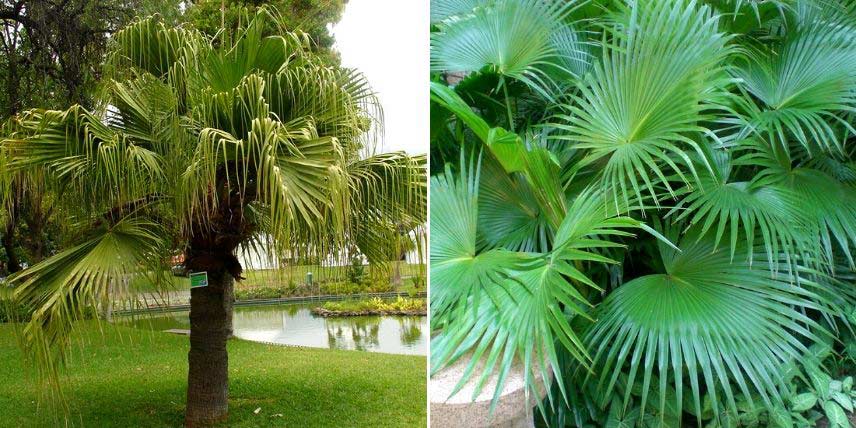
The palmate leaves of Livistona chinensis. In the left-hand photo, you can see the leaf tips drooping “in a cascade”. (photos: Zureks / PpYukShing)
Archontophoenix cunninghamiana
Native to the rainforests of Australia’s east coast, Cunningham’s palm has a slender, ringed stipe, with horizontal striations. At the top of the stipe is a swelling, above which superb, long pinnate leaves unfold. Its majestic silhouette lends a truly lush, tropical effect! It needs to be planted in a large pot, deep enough, with a rich, well-draining substrate that stays relatively moist. Thus, it will appreciate generous, regular watering from spring through autumn, but you can reduce watering in winter. It needs a minimum temperature of 10 °C.
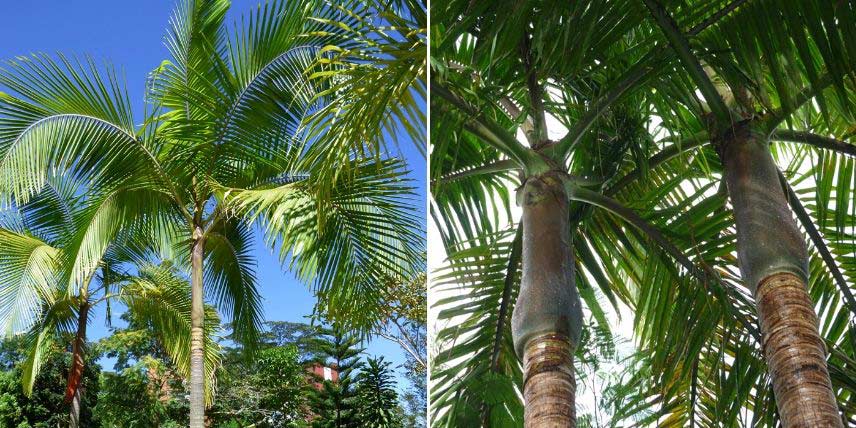
Long pinnate leaves of Cunningham’s palm, Archontophoenix cunninghamiana (photos: Alejandro Bayer Tamayo / Jesús Cabrera)
Veitchia joannis
Veitchia joannis has a very thin, smooth and ringed stipe, grey in colour, with a crown of 8 to 10 large pinnate leaves at the top, gracefully arched. Its elegant, very exotic appearance is much admired! Native to Fiji archipelago, where it grows in humid tropical forests. A fast-growing palm. It requires very bright light and a substrate that stays moist. Remember to water it regularly. Perfect indoors in a bright house or apartment, or in a heated conservatory. It can sometimes be attacked by red spider mites when air is dry.
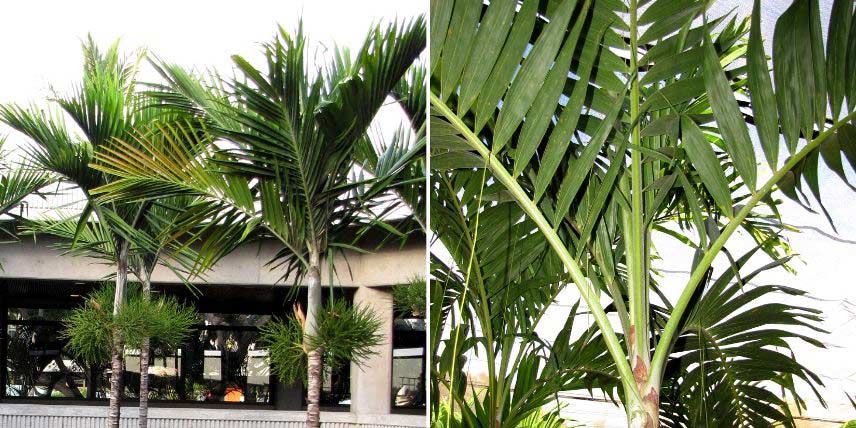
Thin stipe and pinnate leaves of Veitchia joannis (photos: Forest and Kim Starr)
Syagrus schizophylla
Syagrus schizophylla is a palm native to Brazil, where it grows in forest. It has a single, slender stipe, which bears in its upper part the bases of old leaf petioles. The stipe is topped by a crown of dark green leaves, pinnate in form but fairly short! They are borne on spiny petioles. Foliage has a dense, compact appearance. This undemanding palm tolerates dry conditions very well. Ideally, install it in an unheated conservatory. It grows slowly and prefers bright positions.
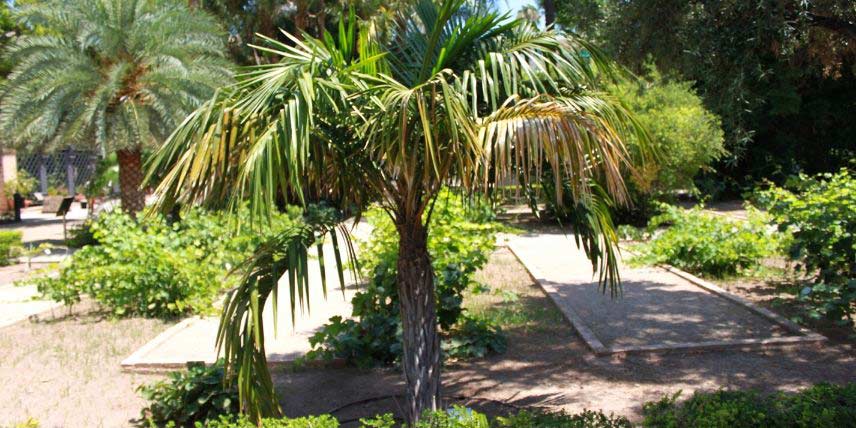
Syagrus schizophylla is a palm with short pinnate leaves (photo Falconaumanni)
Pritchardia hillebrandii
Pritchardia hillebrandii is a palm endemic to Hawaii, which forms a single stipe topped by large costapalmate leaves (fan-shaped with a central vein). Leaves are green, slightly bluish. Petioles and prominent veins are covered with a whitish down. I recommend placing Pritchardia in an unheated cold greenhouse or conservatory. It prefers rich soils. You can, for example, plant it in a mix of horticultural potting compost and well-rotted compost, with coarse sand added for drainage. When conditions suit it, growth is rapid.
→ Find out more in our full sheet on Pritchardia or fan palm: planting and growing
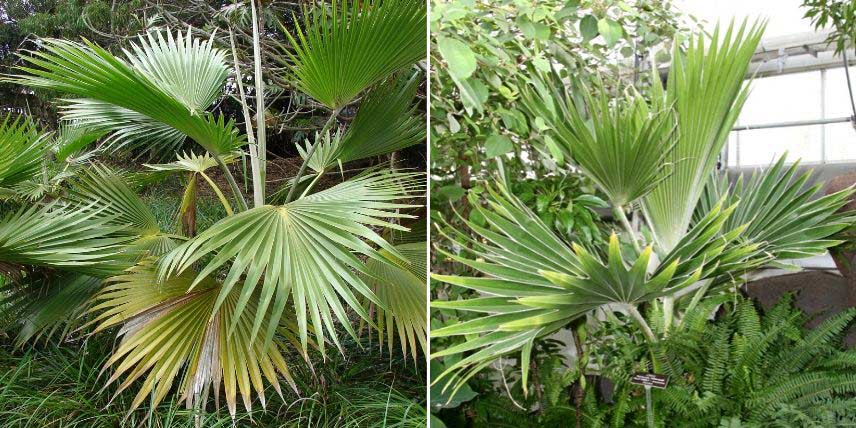
Pritchardia hillebrandii bears beautiful fan leaves (photos: Forest and Kim Starr / Cliff)
- Subscribe!
- Contents
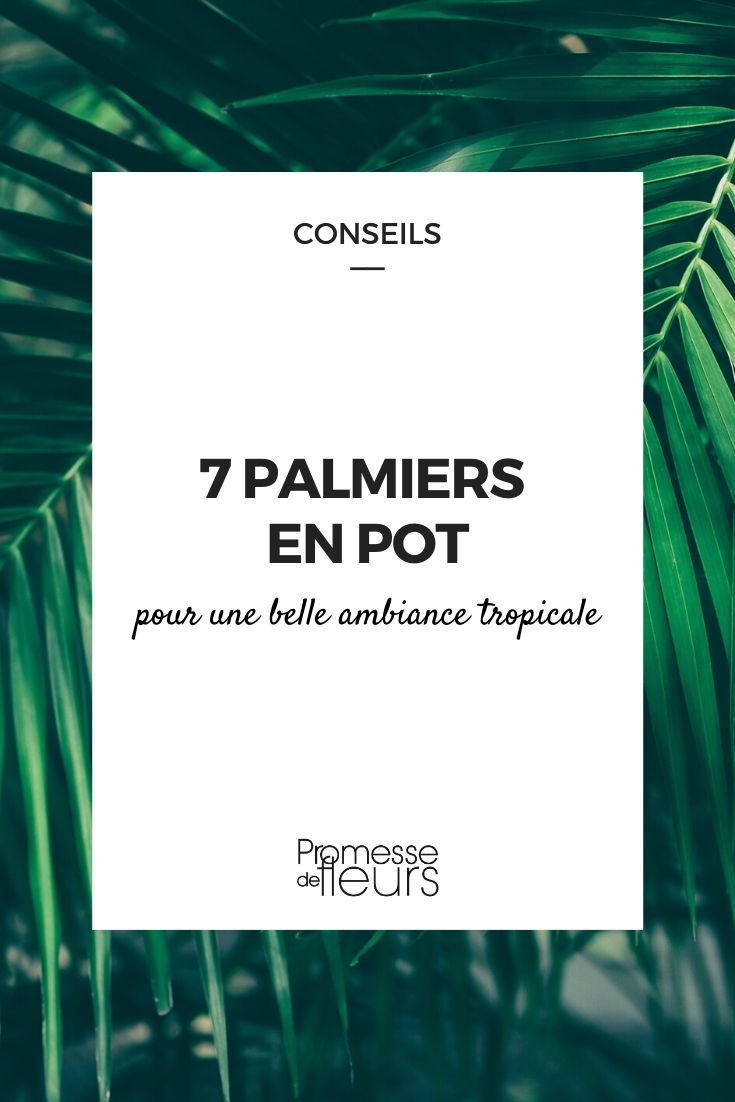































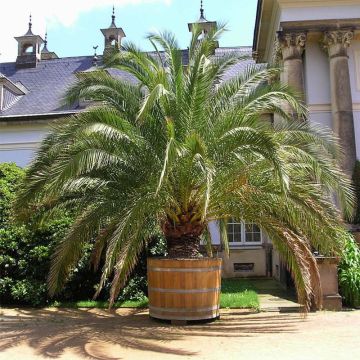
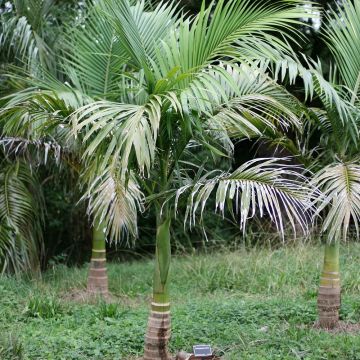

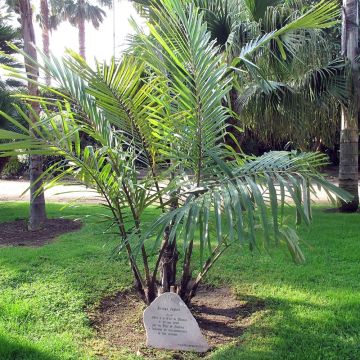
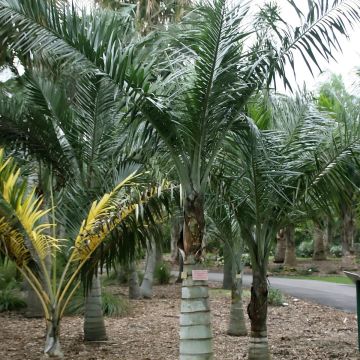
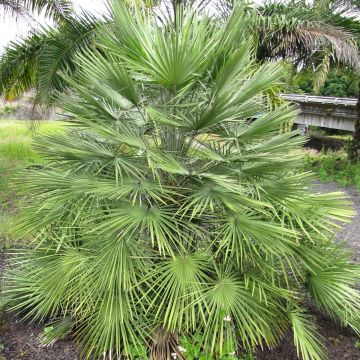
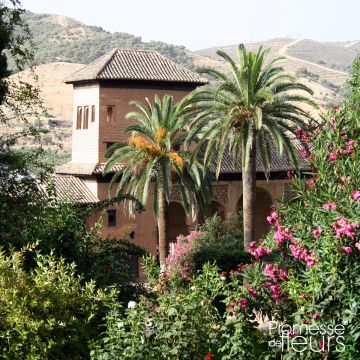
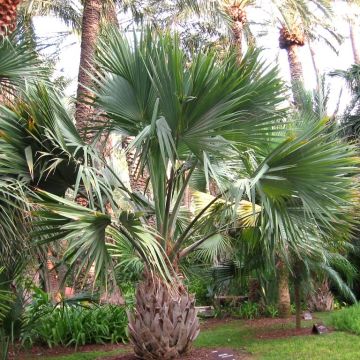
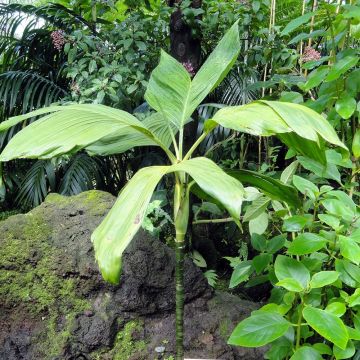

Comments